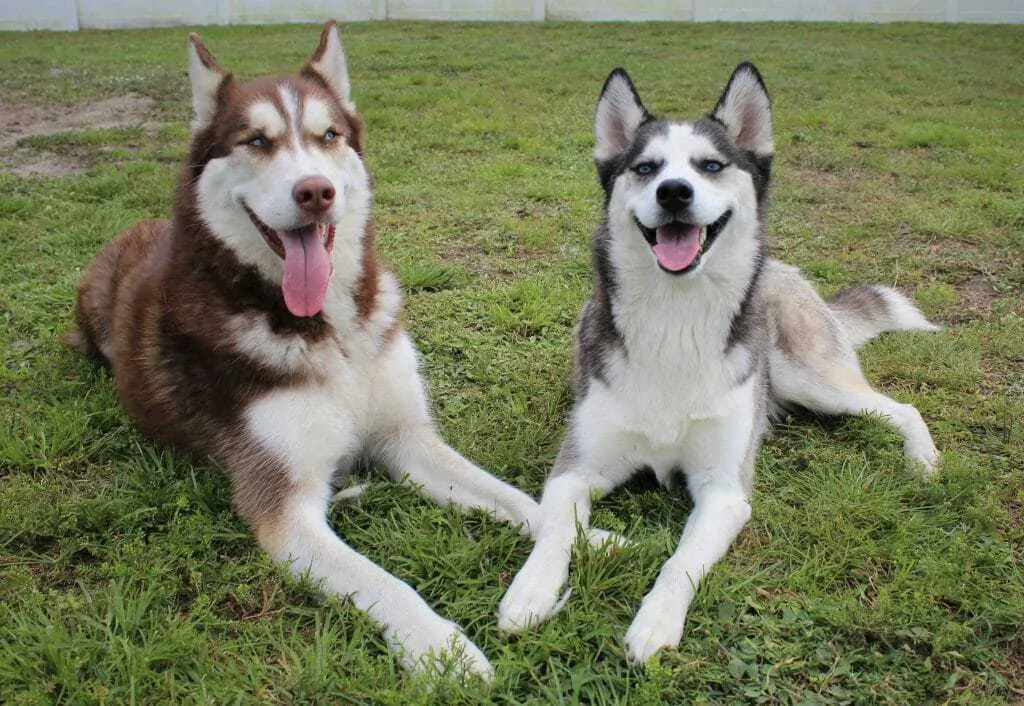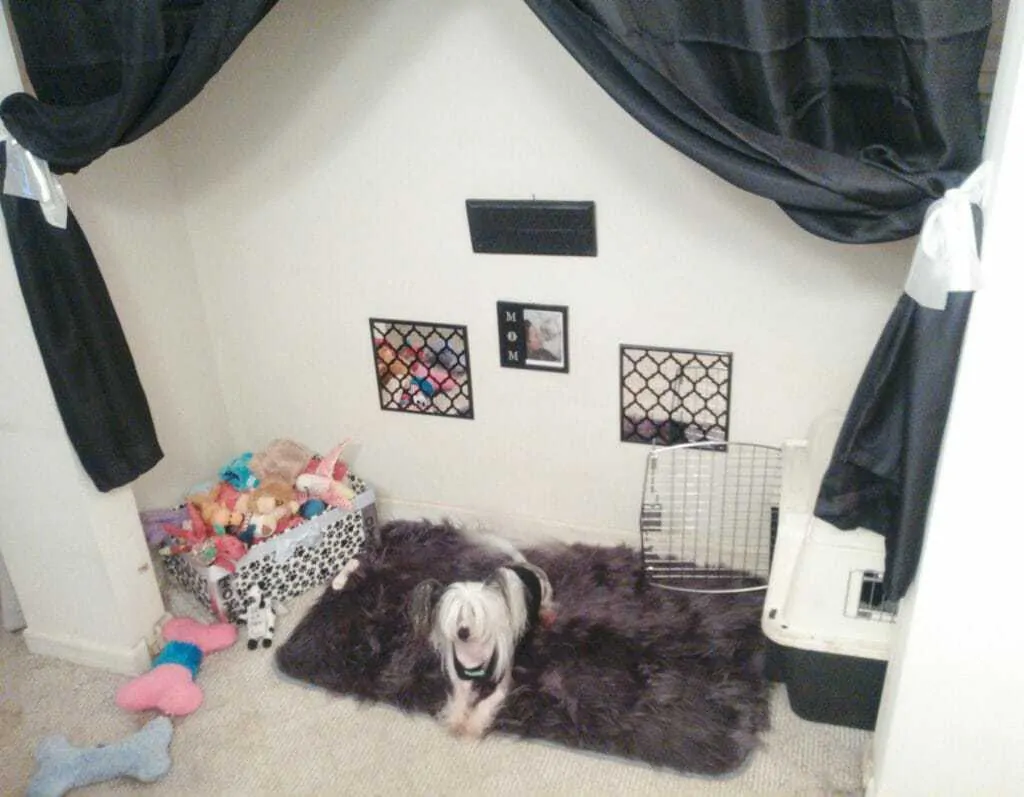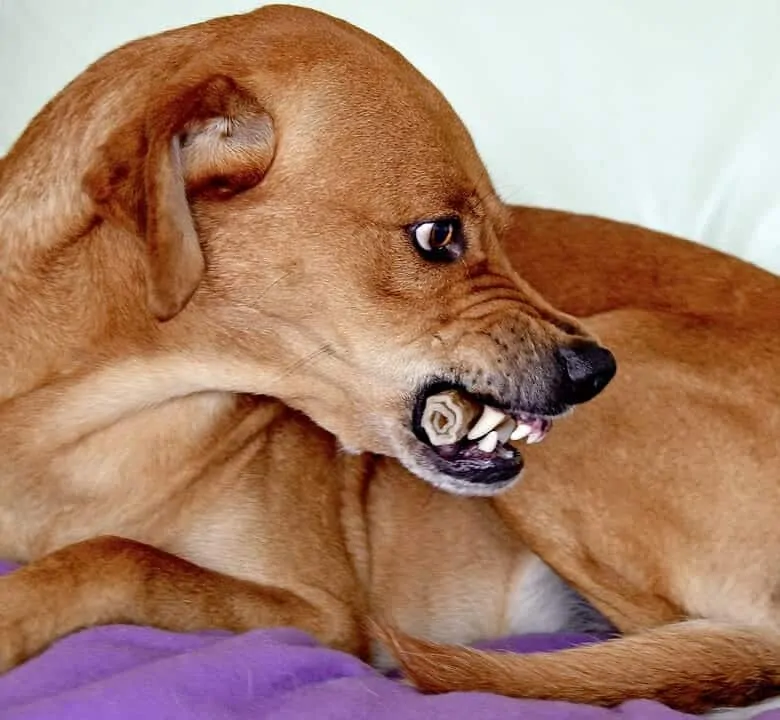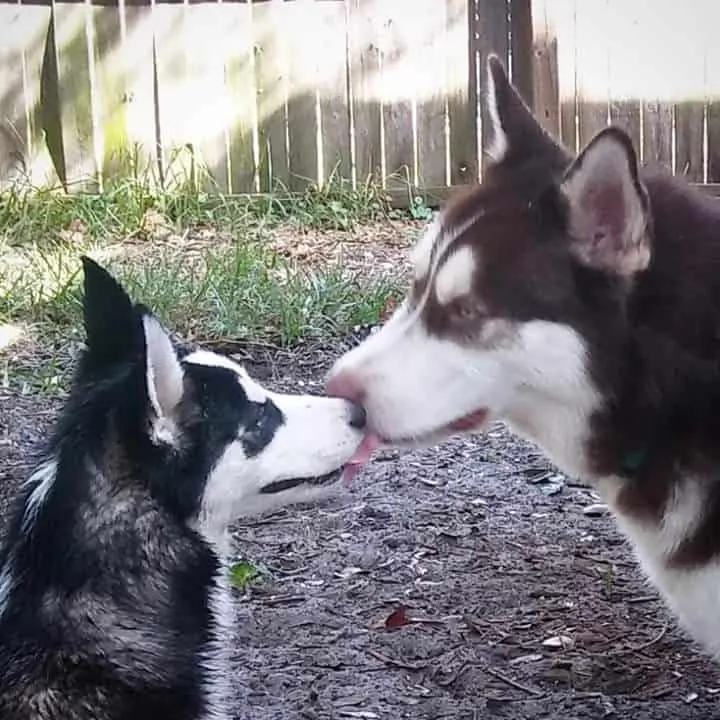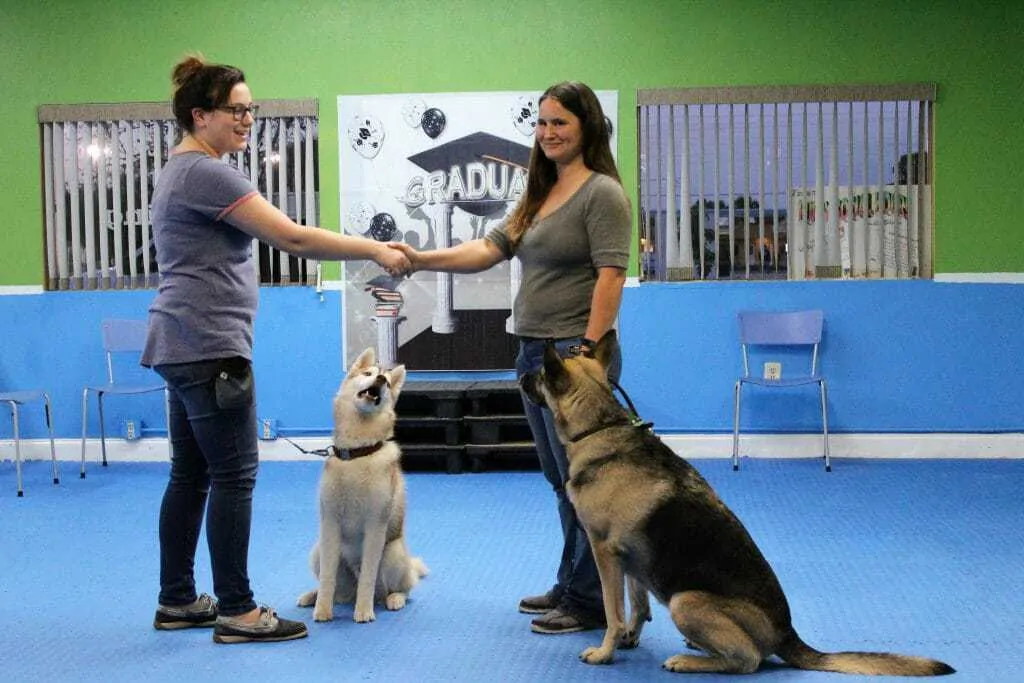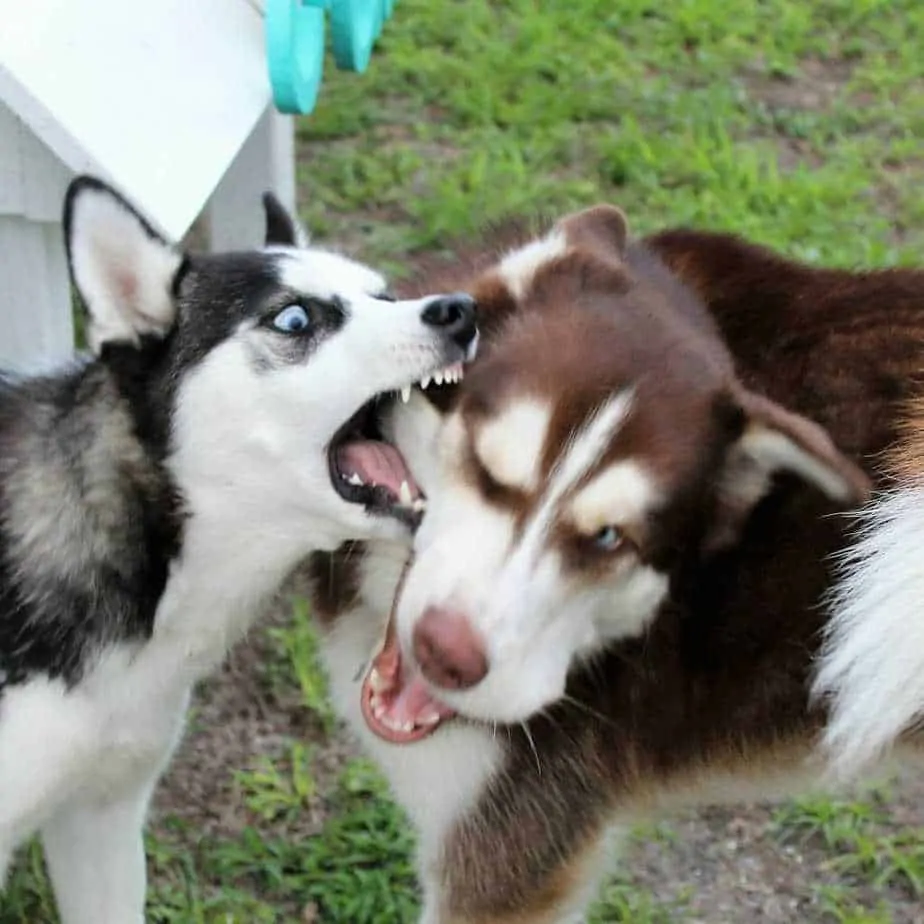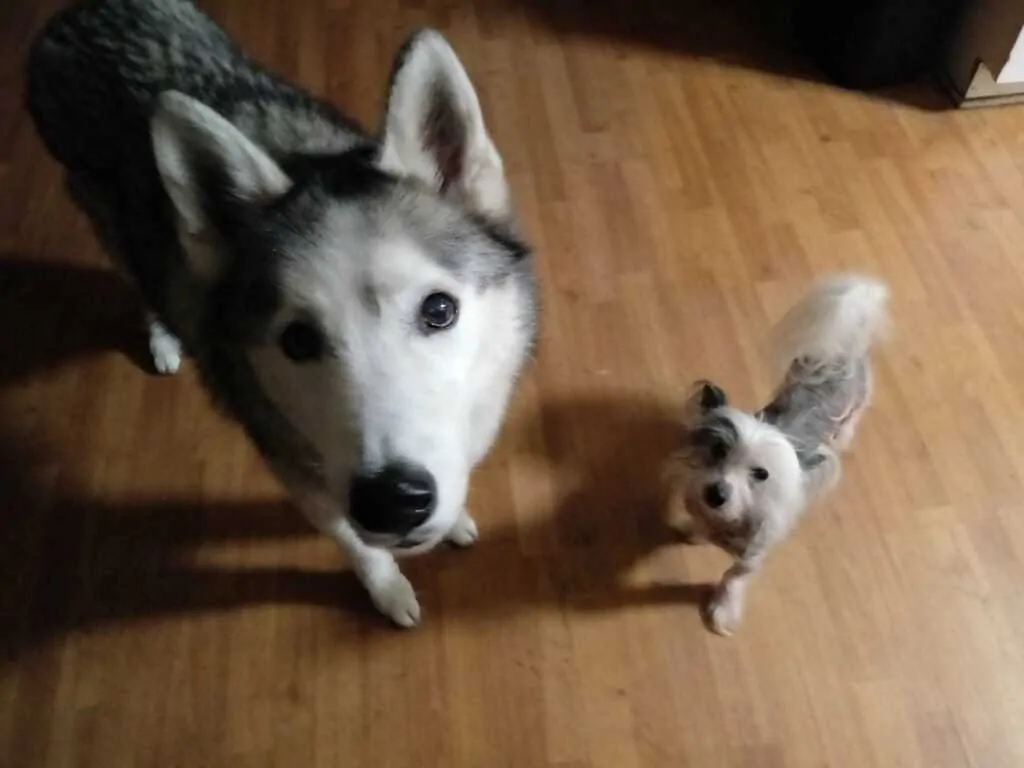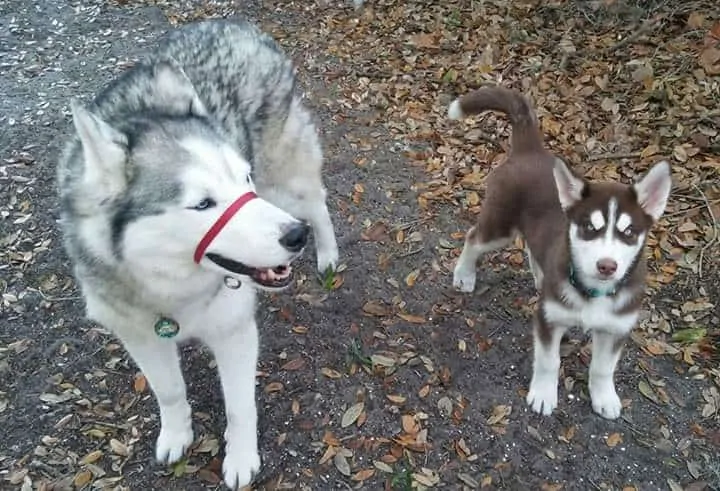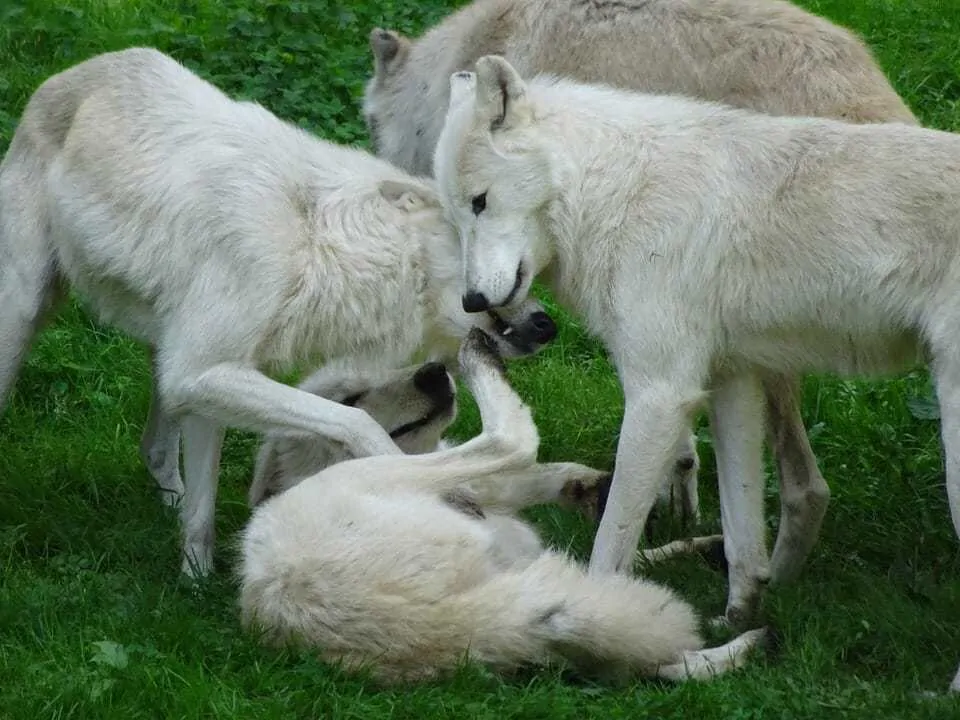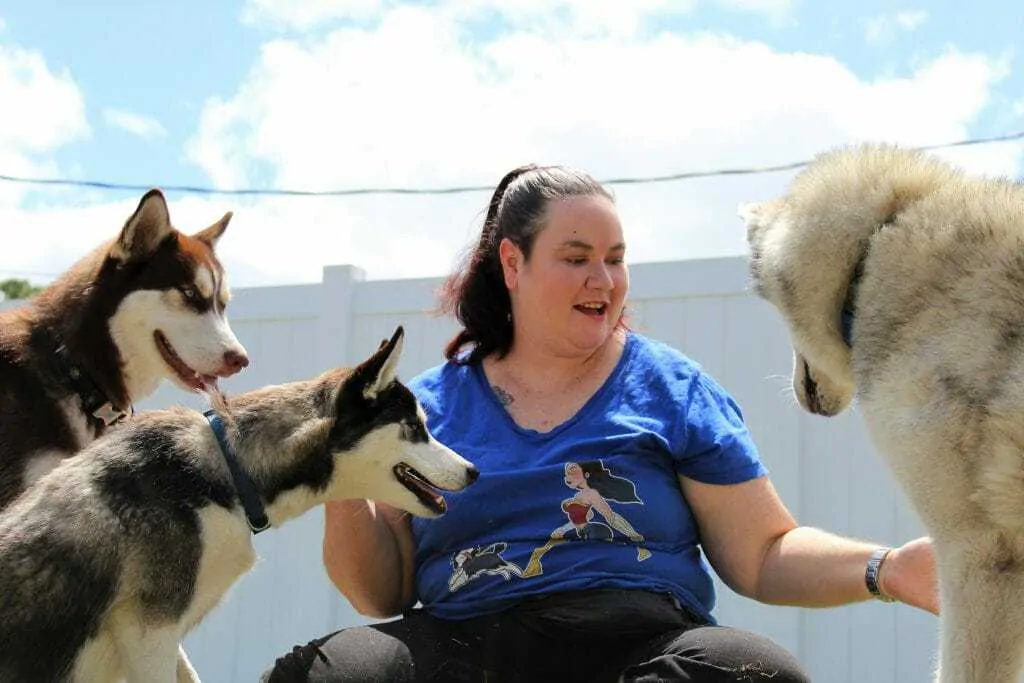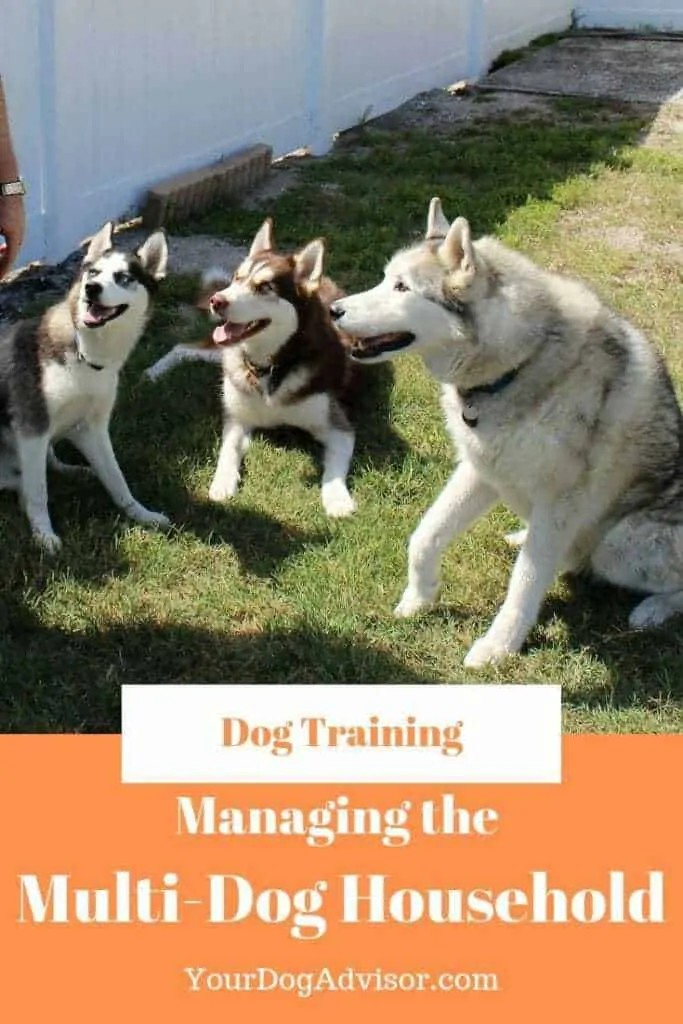Maybe you are considering adding a new buddy into your home for your currently single dog household, or maybe you are like some of us, where dogs are like potato chips and you just can’t have just one. Whichever, end of the spectrum you are at, it is only normal to expect some amount of friction to accompany the addition of a new family member.
Even though Supernova is half of Rocket’s size, they are a great energy match for each other.
Here are some tips to help make the transition of adding a new dog to your household a smooth one.
Contents
Before the First Meeting
It is important to take the time to prepare your house for the arrival of the new dog. It helps everyone get used to each other a little quicker, without added roadblocks.
Puppy-proof!
Even if you are bringing home an older dog, you might not know what bad habits he/she has yet. Hide/protect wires, clear off low tables or desks of things you don’t want eaten or stolen and keep dangerous items (chemicals, sharp objects, etc) under lock and key. The only thing that is worse than one dog getting sick from getting into something, is your whole house of dogs at the vet!
Prepare a Safe-Zone for Your New Dog
Every dog should have a place within your home that they can go when they are nervous, scared or just want to get away from the commotion of the other dogs or people in the house. For most dogs this could be a crate or even a whole room if you have the space, where they can have a little seclusion. When you first bring your new dog home, you want to make sure they have a few days to detox and acclimate to their new environment before trying to throw them in to the daily routine of your pack. This safe-zone you set up is a perfect location for them to have some quiet time and start getting used to their new surroundings.
Loki has the total hookup with this closet converted into his special safe-zone complete with crate, his basket of small dog toys, comfy mat and of course a picture of his mom.(self-taken)
Pick Up Items Your Dogs Might Be Possessive Of
Remember that your current dog(s) is used to his “things” and a strange dog coming in taking those things could cause some upset. Just like us humans, it is hard to adjust when we move in with someone else and they start moving all our things around and using our stuff without asking! So before initial meetings in the home, pick up any toys, specialty chews/bones and even be conscience of favorite dog beds or sleeping spaces if need be.
Also, be very aware if your current dog has any issues with resource guarding. If you think this might be the case, seek the help of a professional certified trainer to work with you on this problem before bringing another dog home.
Many dogs can be extremely protective of any type of specialty toys or bones. If you feel your current dog might have an issue with resource guarding, seek the help of a professional certified dog trainer or behaviorist.
First Meetings
First impressions can be lasting and a big deal to your dog, just as they are to us, so it is important to take the time to plan out initial introductions.
Taking the time to carefully plan first greetings can help set the stage for a lifetime of friendship.
Take the Dogs On a Walk Together
Keep them far enough apart that they can not greet (I would say a minimum of 10 feet away) and walk them in the same direction. Try to keep them from directly staring at one another and be sure to educate yourself prior to the first walks of dog’s body language signals that they might be stressed or irritated. If the dogs seem comfortable, slowly decrease the distance between them on the walk, and of course if anyone starts to get a little upset, increase the distance again, so you should be walking in a snake-like pattern down the street.
Keep the Leash Loose at All Times
Dogs can get more reactive to things when they are on a leash, so it is important that you don’t have a tight hold and send a negative vibe down the line. If it helps, try introducing them through a wire fence or gate of some type (again this should be done on neutral ground) for their very first sniffs so they can have a few minutes to interact with each other without any body contact and you can feel comfortable relaxing your hold on the leash.
Because these owners are keeping a loose leash and meeting on neutral territory, their dogs are completely comfortable with this meet and greet.
Meet 1st on Neutral Territory
For first off-leash meetings a park, tennis court, or any fenced secure areas away from your home can be good choices.
- Be selective in the first off-leash area they greet in. It should be spacious, so the dogs feel room to roam and not a lot of clutter in the environment that the dogs might want to hide behind or corner each other around.
-
- Don’t hover over the dogs during their play sessions. This could cause one of your dogs to feel some tension from you.
- Keep initial greetings short. Just a few minutes can be fine. You want to end on a good note where they still have interest in each other, rather than letting the play go on until somebody gets irritated or something bad happens.
Moving the Meet to Your Home
Have your dogs meet in the yard first, and let them have a few minutes to interact again. Then, bring the new dog in the home first so he/she can have a few
minutes to sniff around the house and check things out without the resident dog(s) being there. When the initial excitement period of checking out the new house has worn off, bring your other dog(s) in (if multiple dogs do this one at a time). Be sure to keep their first interactions in the home down to just a few minutes on the first few days so everybody has plenty of time to acclimate.
For another great resource on introducing new dogs to your home, I suggest checking out the great book “Feeling Outnumbered” by Patricia McConnell and Karen London.
What is Appropriate Play?
Sometimes normal dog play can look excessively rough and be very vocal, even though it is all in good fun. Learn how to read your dog’s body language to determine play.
It is important to familiarize yourself with your dog’s body language and what proper play looks like before your first off-leash sessions. Play sessions should consist of a healthy ebb and flow between dogs, where roles will switch and both dogs are having fun and balancing each others play styles. For instance, if one dog is always being chased and dominated, this is a sign of unhealthy play.
It is especially important to make sure play levels are balanced between large and small dogs. Seppala is the biggest dog in our house and Loki is the smallest, but they have learned to socialize with appropriate play.
Also, during healthy play, dog’s will take breaks on their own from each other. Mine will often break for water during a rough and tumbly play session.
Trouble-Shooting: Muzzle Training
Believe it or not, when we first brought Rocket home, Seppala was not a big fan at all! By conditioning Seppala to happily put on a muzzle we were able to have safe introductions. Here, he has been upgraded to only have to wear his Gentle Leader and no leash. Today, they are fast friends. (self-taken)
Some of you might think of a muzzle as a radical device to use in training, but introduced correctly, it can be a very positive experience and a potentially life-saving item.
If you feel there is concern at any point, or you just don’t know what to expect in the introduction process, it is important to condition your dogs to a muzzle for your initial interactions. This can not only prevent any injuries but can also give you some ease of mind if you are feeling a little tense when they are meeting.
*Of course, if there are any signs of aggression or an escalation in friction between the dogs, be sure to seek out a certified professional dog trainer or behaviorist to help you with these issues.
This video will give you tips on how to get your dog used to a muzzle properly so they actually can learn to love putting it on!
Establishing Social Status
Whenever you introduce a new dog to your family, there is the inevitable fact that the dogs will have to reestablish their social hierarchy within the household. It is very common to have conflicts during this time of adjustment.
However, there are small things you can do to help your dogs learn their social status among each other a little quicker and help your dogs learn and become comfortable in their roles, which can deflate many causes of friction.
Have a Solid Schedule/Routine
One of the most important things you can do early on when you have a new furry family member, is to establish a solid routine for the dogs throughout the day. Dogs, just like some people, can find great comfort in knowing what is coming next, so try and do major events in your dog’s day around the same time such as wakeup/bedtimes, feedings, walks, training times, etc. I can tell you this structure alone has helped many dogs entering my own home adjust quicker.
Develop a Pecking Order
With many wild canids, they have a somewhat strict social structure and our multi-dog household can benefit from this same setup. Let’s say you have 4 dogs. Number their order in relation to leadership amongst them. #1 being the more dominant personality that the other dogs seem most respectful of and on down the line to #4 which would be considered the omega. This dog usually gets things last and takes the brunt of most bullying behaviors.
Wild canids, such as these white wolves, have a rigid pecking order. Helping your domesticated dogs establish this same type of pecking order can reduce many causes of friction.
Believe it or not, most jockeying for position is between the dogs located in the middle ranks. You need to help the dogs see their order in your pack clearly each day so you have less problems. Here are a few ideas on how to do this:
- Feeding order. Feed your dogs after you eat (because of course, you are #1) and lay your dog food bowls down in the order that you established your household’s hierarchy (always highest to lowest).
- Greet dogs in order. When you come home for the day and everybody is excited to see you, say your hellos in correct social order.
- Walking Order. Let dogs out of crates, through doorways/thresholds, and take the dogs on walks in correct social order.
- Hand out treats/toys in correct social order…and no switching or stealing! Out of the more dominant personalities in your house, there will always be one that wants to hoard any new toys or specialty items handed out. Start by bringing home the equivalent number of toys or treats to the number of dogs in your house. Offer Dog #1 his pick of all the toys, then go to Dog #2 with the remaining selections and do this on down the line until the final dog gets the last remaining toy.
These husky buddies have to learn how to wait their turn for a treat. If you feel your dog is a little snappy when handing out items like this, position the dog’s on different sides, as Seppala is shown here, of your body so you can easily body block them if need be.
Using Social Status to Your Advantage
Even though you might be a little absorbed with keeping the social balance between your dogs right now, in the end, you are the ultimate leader, guardian and caretaker of the house. While it is advantageous to be a patient and benevolent leader, it is important to remember that you hold all the cards and can use that position to your advantage.
The “One Bad Apple” Approach
In the previous section we discussed the idea of handing out toys or treats in the social order that has been established for your home. Once your dogs have received their chosen item, do not let them steal each others pick. A dog stealing and hoarding from the rest of the pack should result in you picking up every item from every dog, so everybody loses. When the pack loses as a whole, it can help your dog rethink these decisions in future situations.
Reward the Good Doers & Shun the Troublemaker
At some point, somebody is going to step out of line and break a rule in your house. By reinforcing the dogs that behave correctly and letting the dog that screwed up see the positive reinforcement and then be shunned from it, you can wield a very powerful tool. Here are some examples of how this might be applied.
Example #1:
Your dog jumps on your bed (Where he is not allowed) and lays on your pillow to gnaw on his favorite stinky dog bone.
Solution:
All other dogs are allowed to sleep on the bed, while the culprit has to sleep in his bed/crate/in the other room where he can see them all have access.
Example #2:
Your dog snaps at your fingers or jumps up while you are handing out treats.
Solution:
All other dogs receive treats and pets. When it’s the culprit’s turn, put the treats away and turn your back to them.
Basic Obedience
Making sure your dogs know some basic obedience skills will get you a long way in better management of your multi-dog household. Many times, the other dogs in the house can be their hardest distraction, so be sure when you first start teaching your dog a new skill to divide and conquer! This means practice skills one-on-one with each dog until they are confident before introducing other dogs into the mix.
Here are few obedience cues that can really help you out:
1. Watch Me
A good focus cue can really help your dogs pull away from things when they are super excited. Think of this as their Stop-Drop-and-Roll cue. It means, “Stop what you are doing and pay attention to me. I need something from you!” Start in easy, non-distracting areas and then gradually escalate until you can call it when your dogs are rough housing with each other.
Watch this instructional video on how to teach your dog a “Watch Me” cue.
2. Go to Your Spot
At times when your dogs get frenzied, such as dinner times, when guests come over, etc. it is very helpful to be able to send your dog to a designated location so they are out from under foot. Each dog should have their own designated area. This could be a dog bed, dog training platform such as a Klimb, stool, etc. Starting with a slightly elevated surface is ideal, as it will help your dog hold position better.
Teach your dog to “Go to Their Mark/Spot” by watching this instructional video.
3. Stay
Once your dog is pretty solid going to his/her spot, start implementing a stay there. As the dogs get better, try having them stay next to one another. I especially like to use this at places like doorways that they might all want to run through. Work on building the Stay and Releasing the dogs one at a time to go out. This is a big impulse control game and takes a bit of practice but it really can help with a lot of issues that happen around that door or other areas your dogs might get hyper-aroused.
When initially teaching a Stay, be sure to reward whenever your dog is calm. This instructional video teaches you the next step, which is adding a release word to your Stay.
4. Leave It
You drop some your medication on the floor as you are getting it out of the bottle, one of your dog’s starts counter surfing, or maybe your dogs confront something potentially harmful in the yard, like a snake. You never know when the use of a solid Leave It cue might arise. This cue basically means stay away, this might be dangerous. No investigation of any kind!
This video is a great example of how you can start practicing floor Leave-Its with your dog. Loki is a little advanced on this trick, so feel free to start this on-leash if your dog is trying very hard to get to your practice items.
Working with a multi-dog household is a constant revolving door. New situations can evolve as everybody learns the new routines and adjustment time can take as long as a few months to get a good, consistent rhythm. Just take your time implementing these different steps and you will be well on your way to one big happy family 🙂
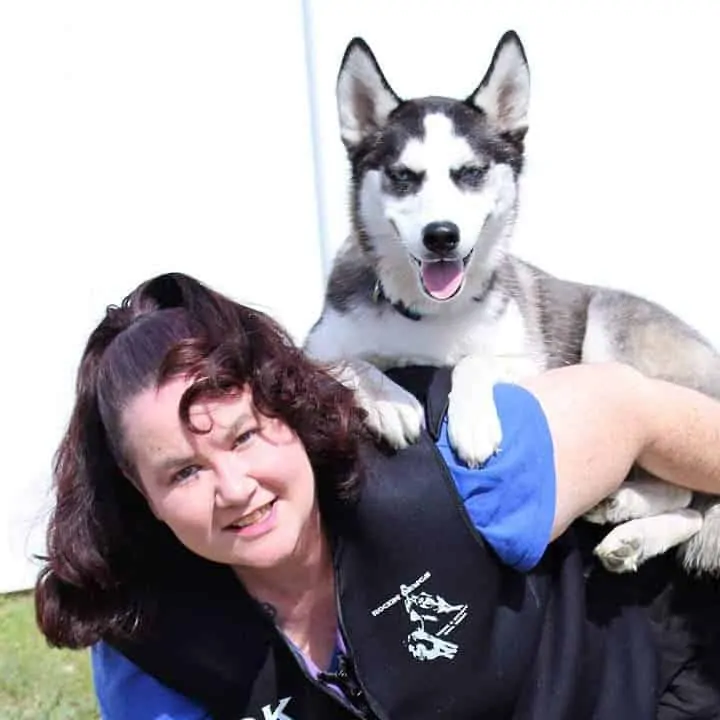
Kim Mayes has been training, performing and competing with her dogs for over 20 years. She is a Certified Professional Dog Trainer (CPDT-KA) a Certified Trick Dog Instructor (CTDI) and Stunt Dog Judge (SDJ) amongst her many certifications. She is a published author in the area of training and behavior, writing books such as “Getting Braver” and “Hyper Dog 101” and owns Rockin’ Dawgs Positive Dog Training LLC in Rockledge, FL. She is also a proud member of the Pet Professional Guild which promotes the importance of using force-free training.
Kim resides in Brevard County, Florida with her 3 Siberian Huskies, Seppala, Rocket and SuperNova, and her Chinese Crested Dog, Loki. Her wonderful rescue pack has gone on to achieve Champion titles and even hold world records in the trick and stunt world.
